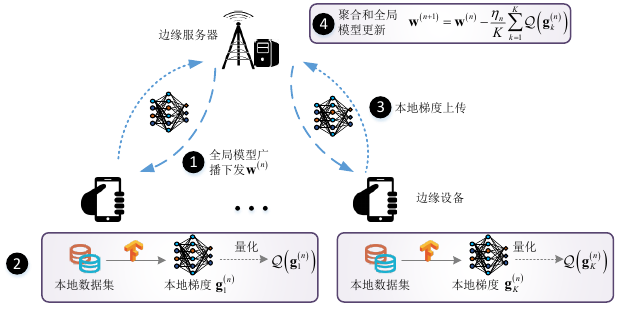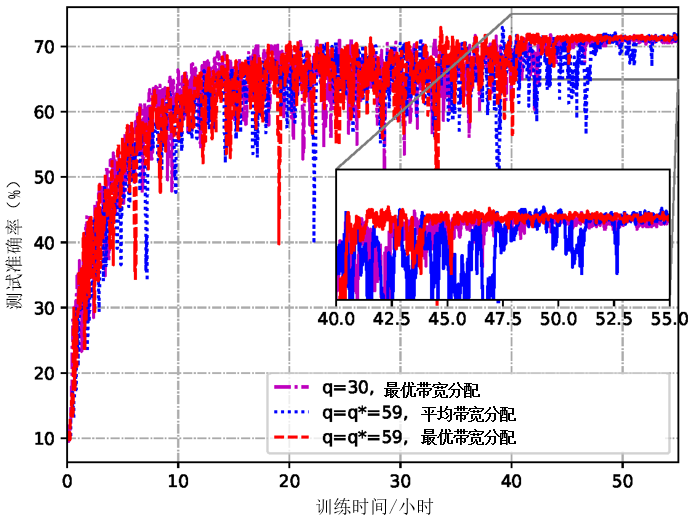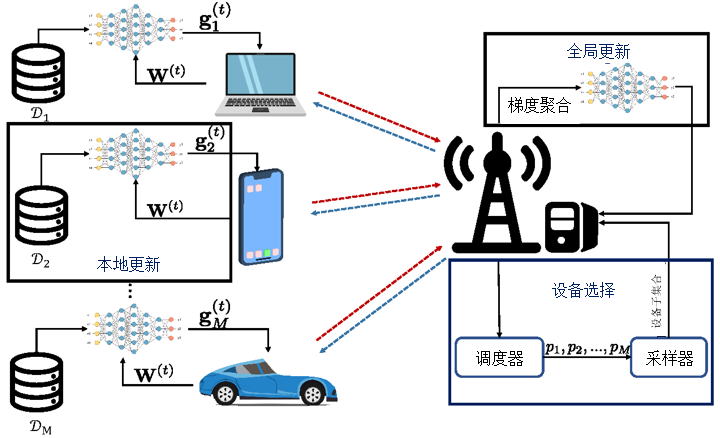Projects
Research on theory and algorithm development for personalized federated learning in 6G communication networks
Project description/goals
Future 6G network will not only be used for communication, but also gradually evolve into a new infrastructure supporting industrial Internet, tactile Internet, smart city, auto-driving and other industrial applications. Therefore, the future 6G network needs to have strong perception, communication, computing power and intelligence at the same time, becoming not only a pure "information transmission pipeline" but a comprehensive platform with integrated information perception-transmission-processing-control capability, so as to enable network-level intelligence.

Importance/impact, challenges/pain points
How to efficiently obtain massive training data and quickly and accurately complete the training of intelligence model will be the key to realize network intelligence. However, most of the training data come from the network edge. Traditional on-device computing and cloud computing are difficult to support the rapid model training due to limited computing power or long communication delay. In addition, the traditional network design only focuses on the transmission of grammatical information but not the semantic one, while the latter is more critical for achieving network intelligence. With that said, the traditional network design that ignores semantics will lead to the transmission of redundant data and even invalid data.
Solution description
Building on the mobile edge computing technology, we propose a personalized federated learning solution to realize the rapid distributed model training. In the proposed solution, wireless communication, mobile computing and machine learning are integrated in a joint design, leading to a new communication technology for semantic perception targeting personalized federated learning architecture.


Key contribution/commercial implication
5G and artificial intelligence are the key areas in the “intelligent manufacturing 2025 plan”, as well as the major infrastructure advocated by the current "new infrastructure"; The network intelligence based on federal learning integrates B5G and artificial intelligence, which meets the needs of national key strategic development. On the other hand, both the International Telecommunication Union and the China future mobile communication forum pointed out in their 6G white paper that communication-computation integration and network intelligence should be the basic functions supported by 6G; Therefore, the successful implementation of the project will have a positive impact on the standardization of B5G/6G and also strengthen China's core intellectual property rights in relevant fields.
Next steps
In the next step of this project, the following two main contents will be studied as planned:
1) the efficient training methods for personalized federated learning, and the optimal communication-computation joint resource allocation for personalized federated learning; 2) The fundamental theory and algorithm for multimodal information fusion and transmission towards efficient semantic perception in personalized federated learning.
Collaborators/partners
China Academy of Information and Communications Technology
Team/contributors
Guangxu Zhu




